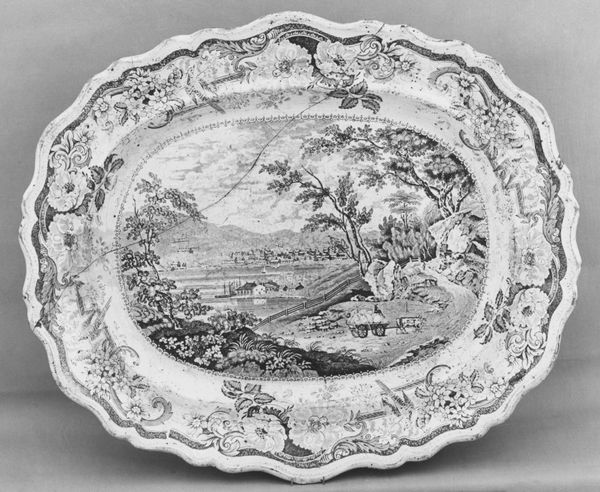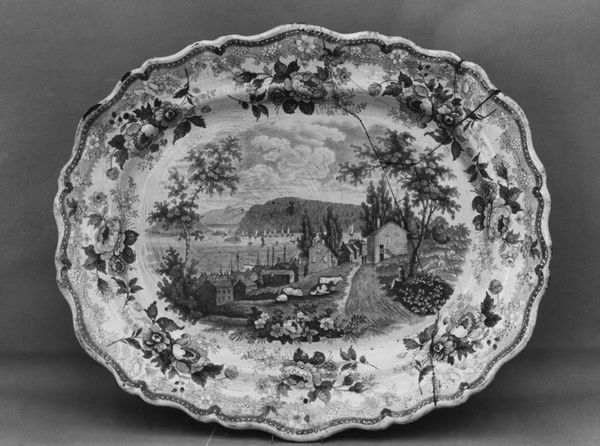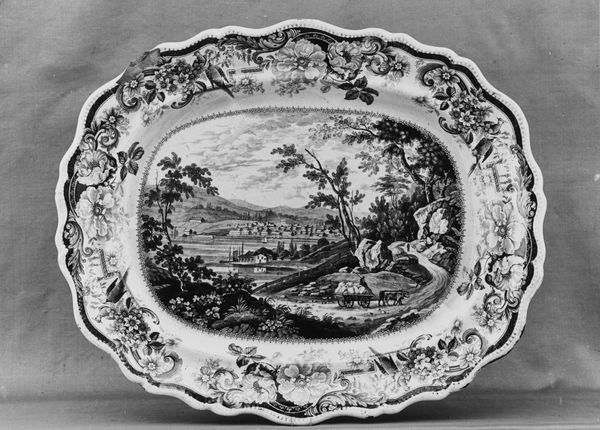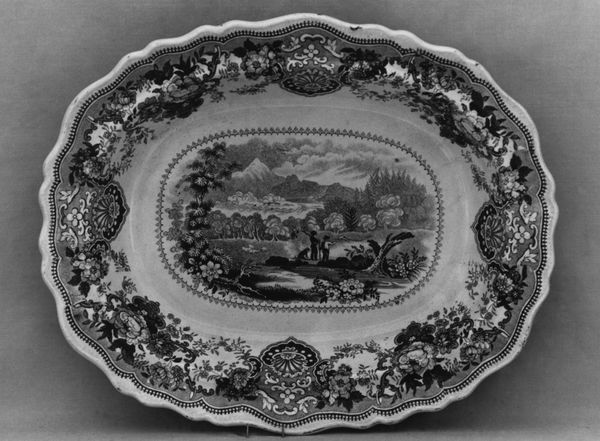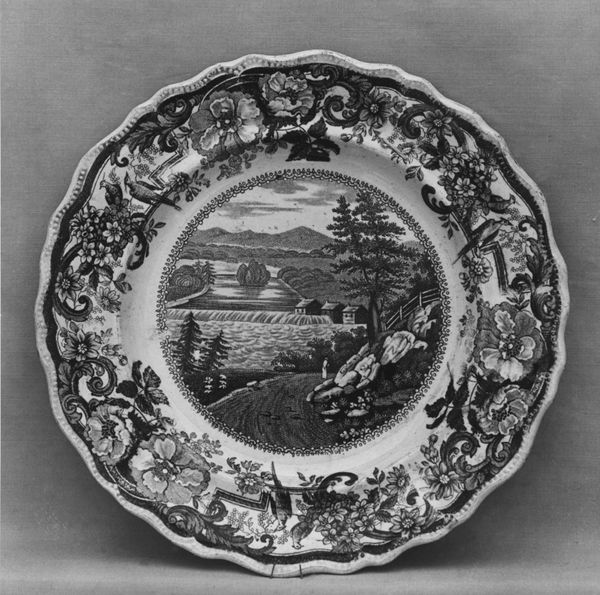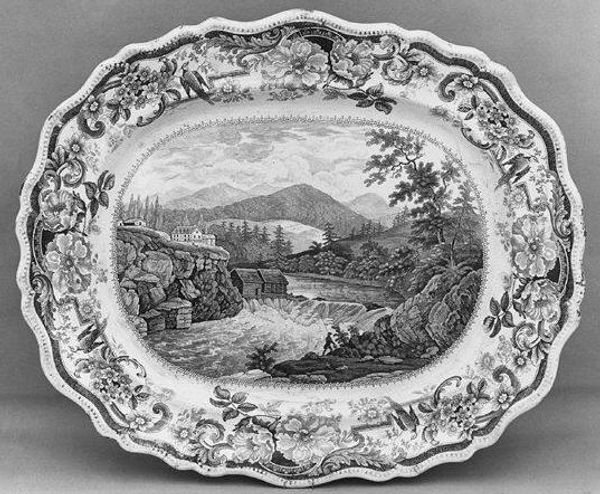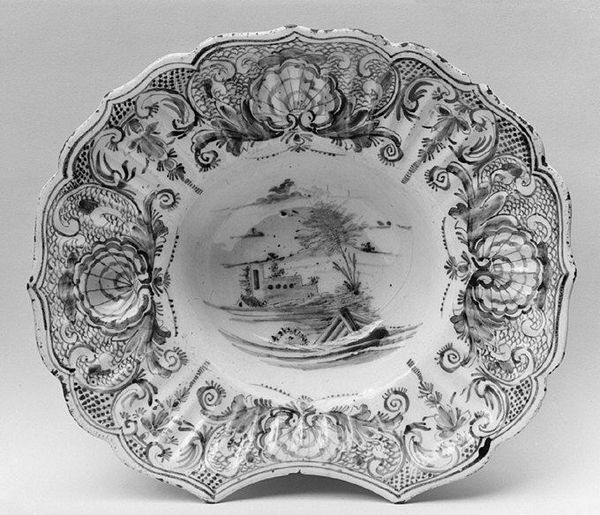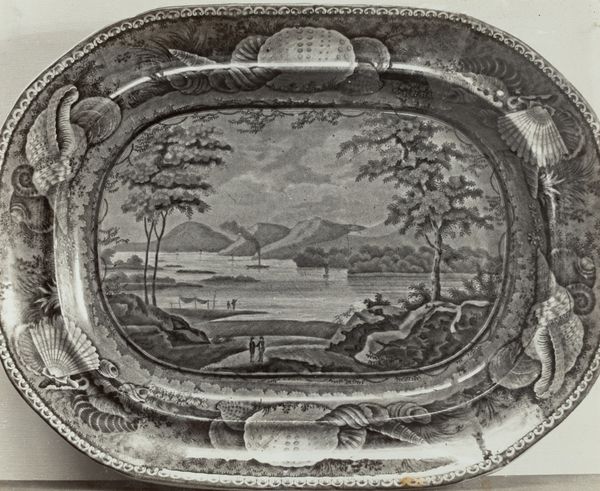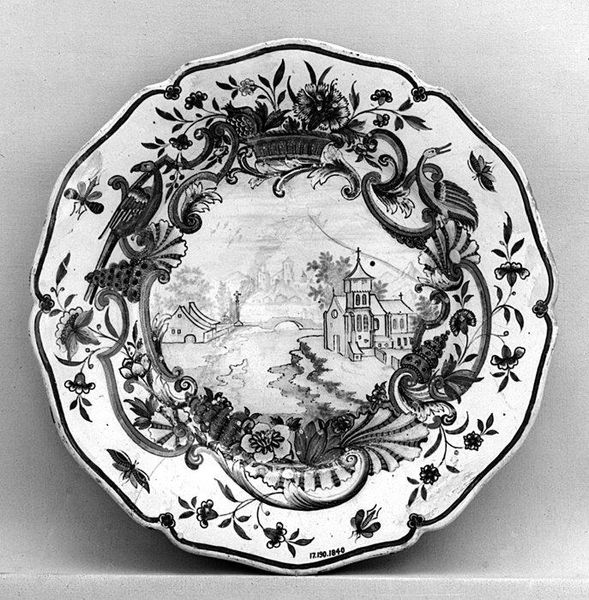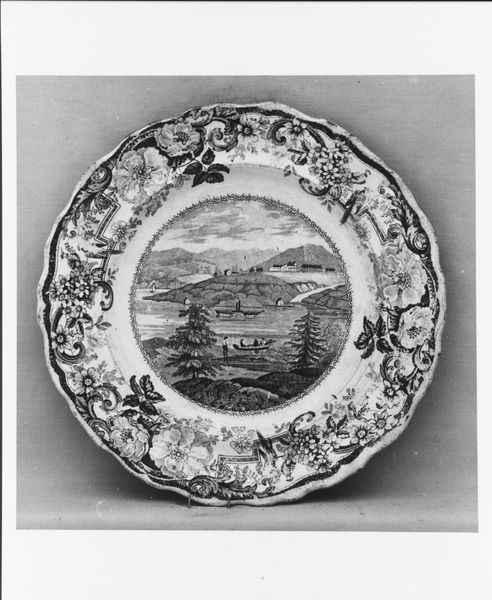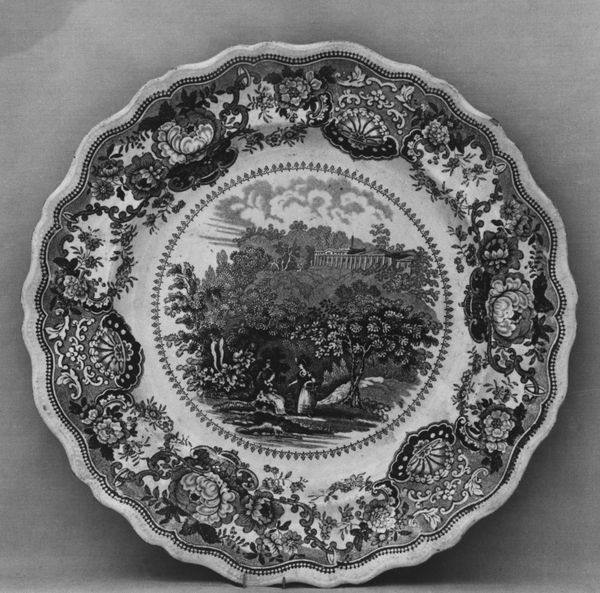
tempera, ceramic
#
tempera
#
sculpture
#
landscape
#
ceramic
#
decorative-art
Dimensions: 15 1/2 x 14 7/8 in. (39.4 x 37.8 cm)
Copyright: Public Domain
Curator: Immediately, the grayscale and subdued atmosphere suggest a wistful narrative. Editor: Here we have a transfer-printed earthenware platter, dating from around 1822 to 1837, crafted by James and Ralph Clews. What strikes you about it? Curator: The formal composition. It's fascinating how the central landscape is both contained by the oval shape and contrasted by the floral rim. The monochrome palette reinforces this sense of contained memory. It presents the landscape as a composition but also suggests some historical or mythical narrative is somehow separate. Editor: Absolutely. The transfer-printing technique itself is significant. Mass production meant this kind of landscape imagery became widely accessible, influencing perceptions and imaginaries of place across different social strata. These kinds of wares played a major role in the shaping of both personal and public memories, both through use and as display objects in the domestic setting. Consider the material conditions of the factories turning these out; the labour required for these wares to reach homes far and wide. Curator: Interesting observation on production. And while I appreciate the materiality, it also calls attention to the representational strategies involved. See how depth is created with these simple gradations of tone, with forms emerging out of the ground. A simple and affecting symbolic space. Editor: For sure, though that simplification also highlights how those places may not have been fully represented by what that mode of mass production offered. There are untold realities hidden within those pretty landscape scenes. These are more than beautiful surfaces; they're laden with industrial, and perhaps, even colonial echoes. Curator: I appreciate your contextual interpretation, framing the artwork as embedded with multiple layers of historical meaning beyond just surface appearance. Editor: And conversely, you make a good point about appreciating the piece from its aesthetic virtues and impact in the construction of our internal representation.
Comments
No comments
Be the first to comment and join the conversation on the ultimate creative platform.
